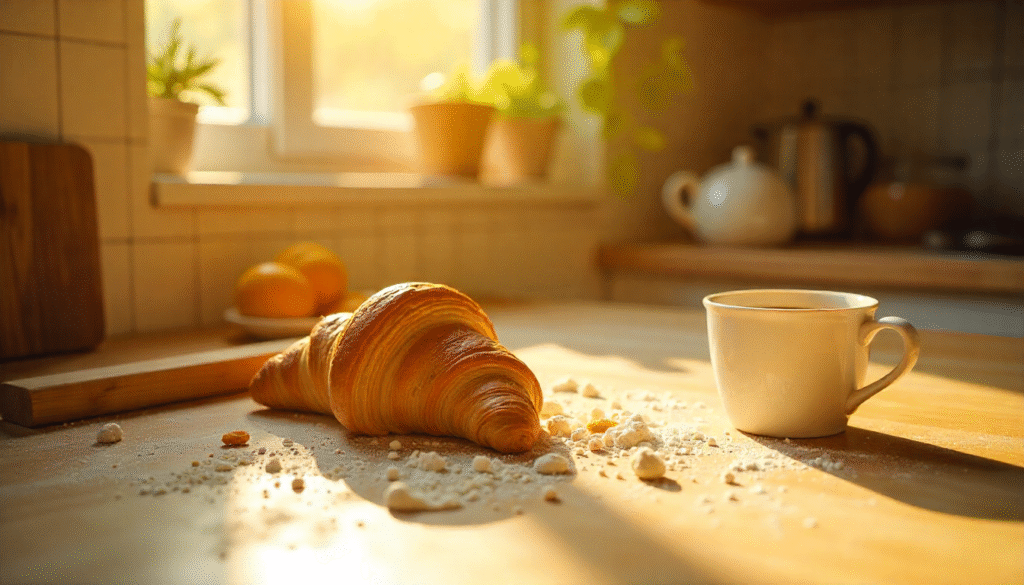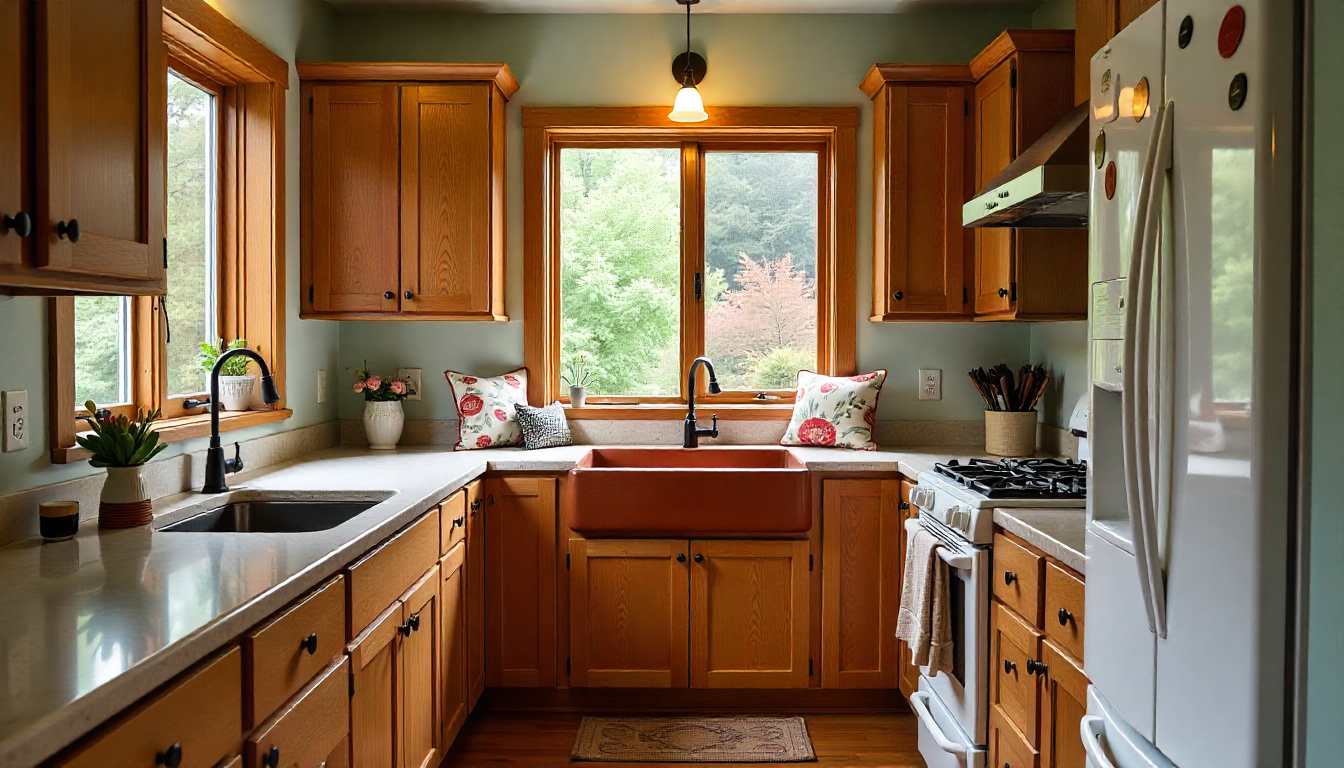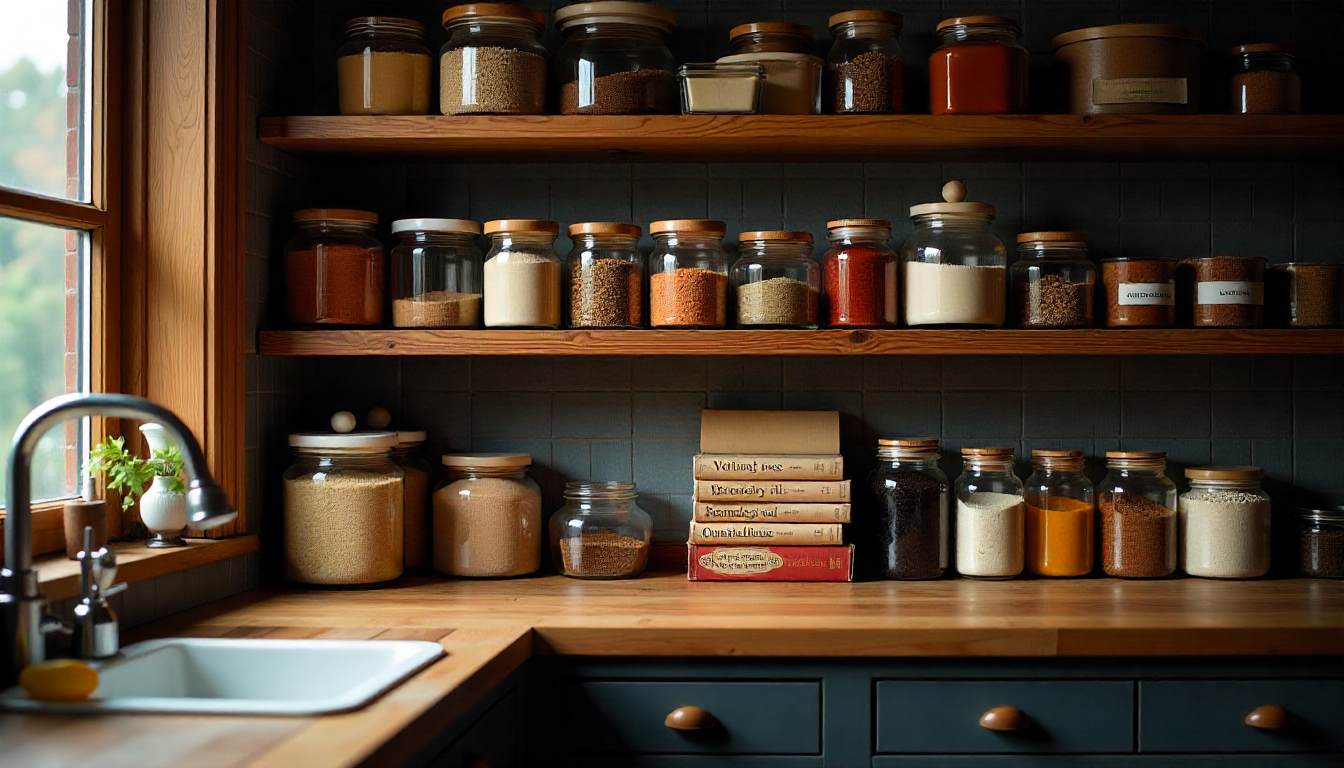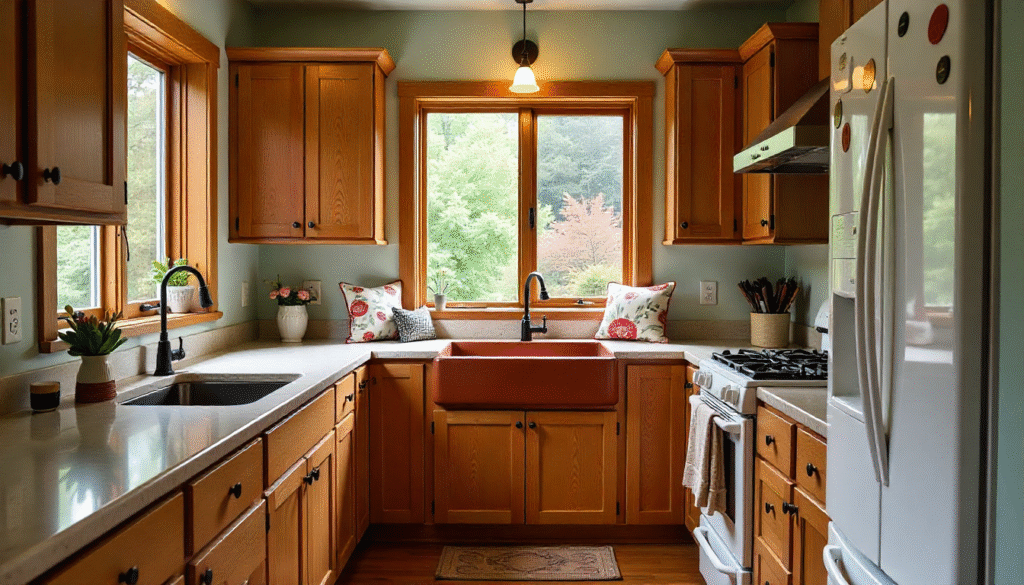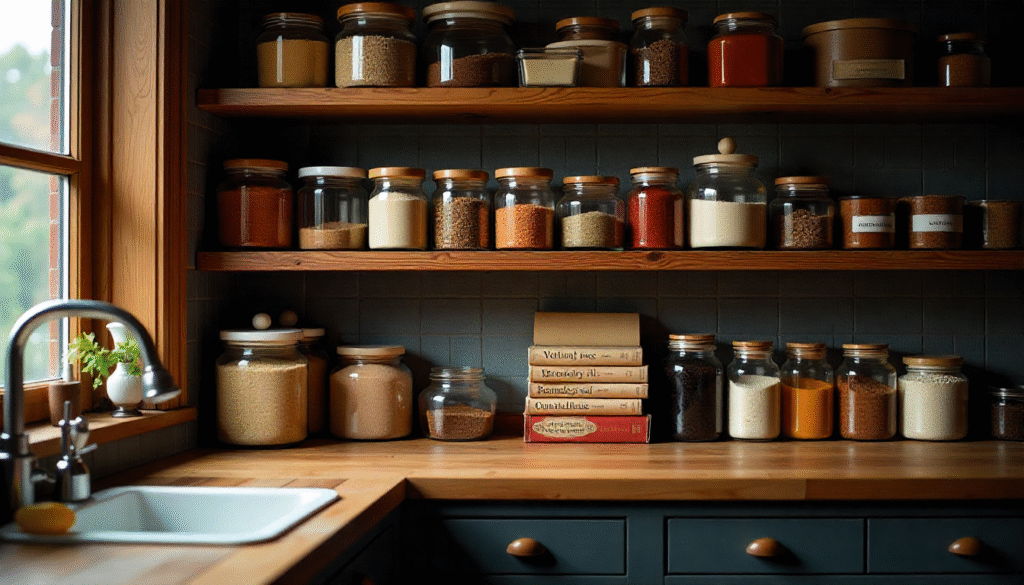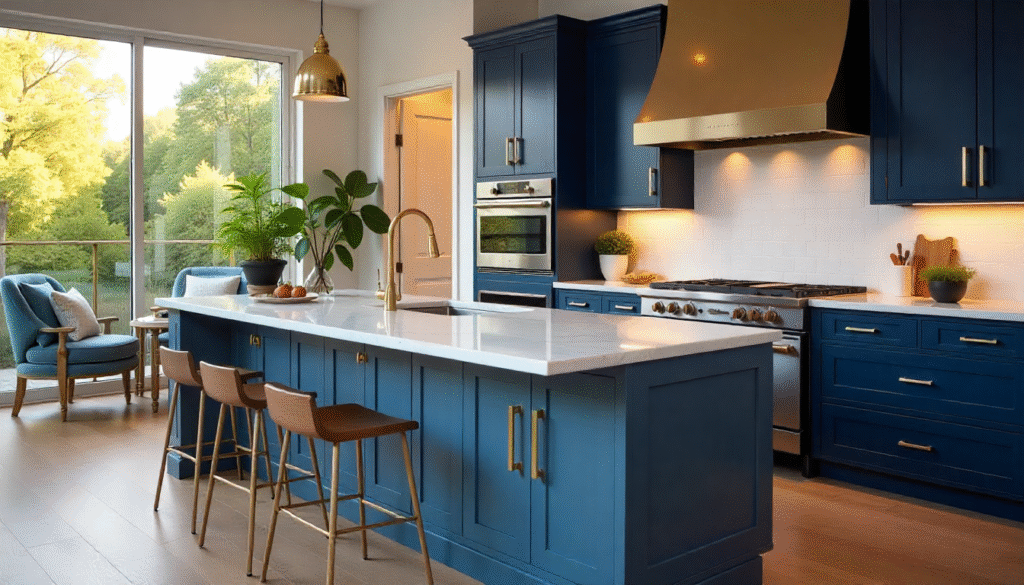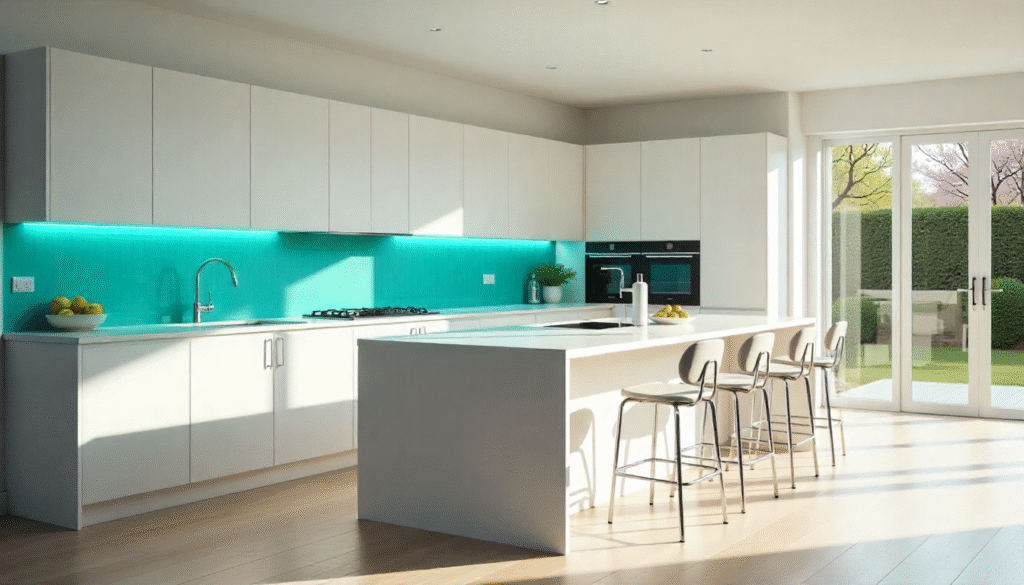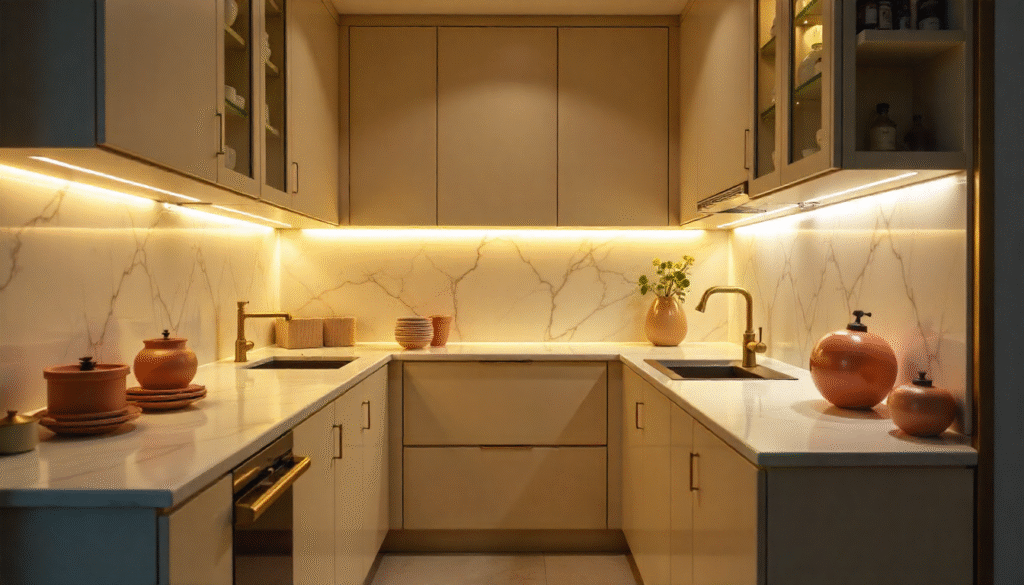Mistakes in cleaning can secretly harm your kitchen cabinets with the use of inappropriate goods or methods. Leaving off normal cleaning, strong chemicals, and abrasive sponges can damage cabinet materials and strip finishes. Regular care and delicate cleaning techniques will help to preserve the beauty and lifespan of your cabinets.
Cleaning Mistakes 1: Soaking Cabinets with Excess Water
Soaking your kitchen cupboards with too much water is one of the most frequently done yet typically ignored cleaning mistakes that could seriously harm your furniture. Though wiping cupboards with a very wet cloth or spraying them straight with a water-based cleaner might seem innocuous, the reality is too much Your cupboards’ beauty and life span may be drastically harmed by moisture.
Particularly susceptible to water damage are kitchen cabinets crafted of wood or wood-based materials. Should water enter cracks, angles, or seams, the material might swell, bend, or even split at the joints. Over time, this not only weakens the cabinet frame but also harms the smooth finish, producing ugly bubbles, stains, or peeling.
For laminated and painted cabinets even, too much water can weaken adhesive strength, raise edges, and alter colours. Especially bad this problem is in wet areas like Johor, where humidity hangs in the air and slows drying even further. The best way is to use a microfibre towel somewhat damp rather than straight spraying or using saturated wet cloths.
Before washing, always completely wring the cloth; then utilise a dry, soft towel to eliminate any residual moisture. Paying close attention to little behaviours like this can greatly lengthen the lifespan of your cabinets while retaining their immaculate and fresh appearance. Besides rescuing your cabinets from expensive repairs, avoiding the mistake of too much wetness will help to maintain their aesthetic appeal for decades to come.
Cleaning Mistakes 2: Not Drying After Cleaning

The most commonly neglected error that might silently damage your kitchen cupboards is not drying them adequately following cleaning. Though many householders believe a quick spray of a gentle cleanser or a wet towel suffices, residual humidity can present persistent issues. Kitchen cupboards made of solid wood, laminate, or MDF are especially susceptible to water damage.
Swelling, distortion, or bubbling of the surface can result from water or cleaning solution penetrating hardware, seams, or corners. Over time, this humidity degrades the protective coating causing peeling paint, faded patches, or even mould growth in concealed locations. Where this is particularly prevalent that near dishwashers, cooking surfaces, and sinks — steam and sprinkles make the condition worse.
@ampquartzcabinets Kabinet 7x8ft boleh pasang lebih dari 9 jenis aksesori dan banyak lagi extra storage yg lain! 🤩 Cepat PM kami untuk dapatka harga promo Ogos ni 🇲🇾 #AmpQuartz #merdeksale #kitchencabinet #promo #fyp
♬ original sound – AmpQuartz – AmpQuartz
Stuck moisture will invariably impact excellent cabinetry. By regularly drying surfaces after cleaning, you may simply maintain the beauty and lifespan of your cupboards. Removing all remaining moisture with a mild, dry microfibre fabric ensures the finish is kept spotless and aids to avoid water rings or streaks from developing.
Skipping this step could hasten cabinet damage and tears in humid areas like Johor, where extra atmospheric humidity already threatens them. Adding drying into your daily routine helps to preserve the glossy, like-new appearance of your cabinets therefore protecting your future long-term investment as well as extends their life.
Cleaning Mistakes 3: Using the Wrong Cloth
Among the most usually ignored yet damaging cleaning mistakes when taking care of kitchen cabinets is using the wrong cloth. Grabbing any rag, worn T-shirt, or even paper towel for a fast wipe-down might appear innocent, the texture and fabric of these long-term effects on cleaning supplies can cause the cabinet’s finish to be ruined.
Initially undetectable, tiny scratches caused by coarse materials, rough sponges, or inferior paper towels gradually dulled the surface, especially on glossy or painted cabinets. Over time, these small scratches create a worn and prematurely aged aspect on cupboards. Particularly paper towels can drop fibers that leave unsightly stains and debris ruining the elegant appearance of the cabinets.
Given that it is soft, lint-free, and designed to trap dust and grime without harming the surfaces, the safest alternative is a high-quality microfibre towel. Microfibre cloths need less cleaning solution as well, therefore reducing the chance of moisture damage to wood or laminate cabinets. Simply switching to the appropriate cleaning cloth will help your cabinets last longer, guard them from pointless wear, and maintain their natural brilliance.
Considering that kitchen cabinets are among the most apparent and often used features of every house, retaining their finish demands proper cleaning techniques, not It Preserves not only their looks but also supports the overall design and worth of your kitchen. This tiny yet significant piece of information completely transforms long-term cabinet upkeep.
Cleaning Mistakes 4: Skipping Regular Cleaning
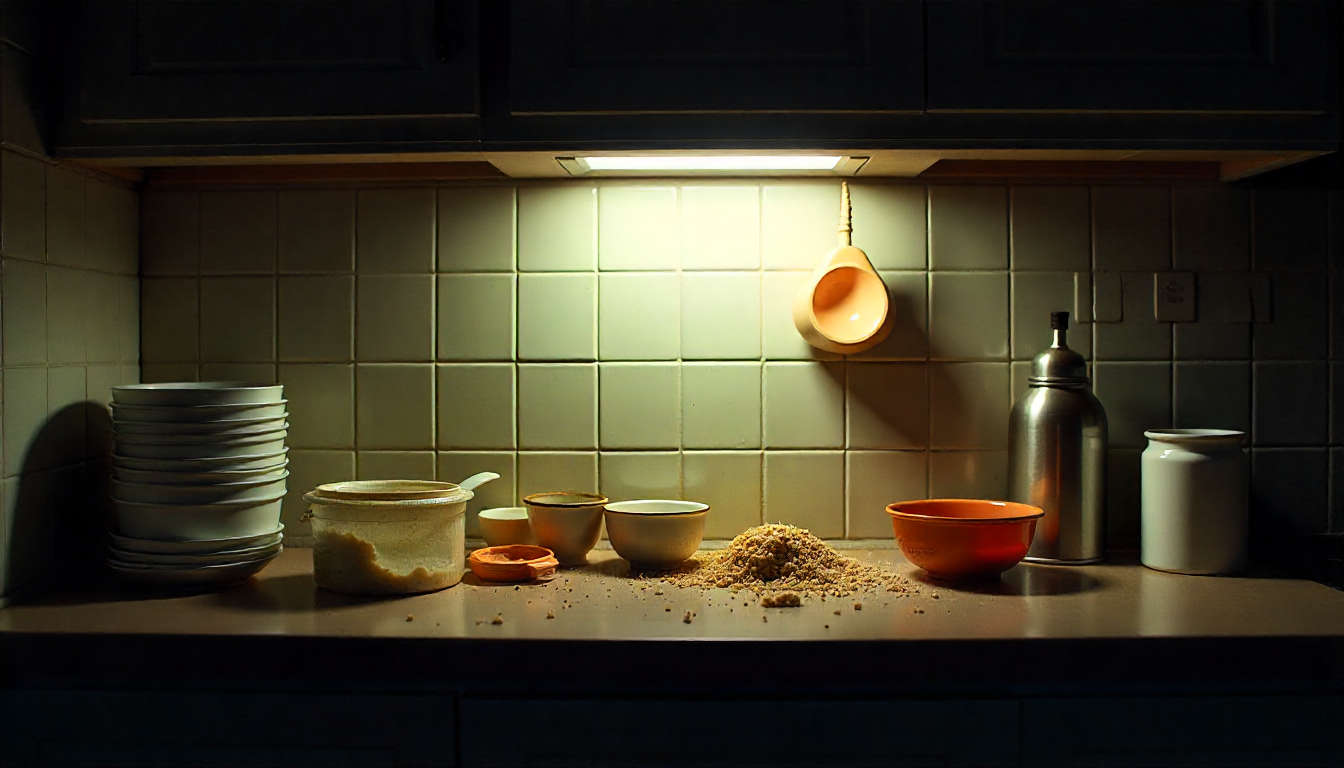
Among the most undervalued yet hazardous kitchen cabinet errors customers commit is foregoing routine cleaning. Because cabinets are not directly exposed to strong spills like counter tops or kitchen appliances, it is easy to assume they do not need frequent attention.
However, long-term problems are present in them. Flying food splatters, steam, dust, and grease are frequent sources of damage on kitchen cabinets. These particles deposit and remain uncleaned, forming a sticky layer that progressively dulls the cabinet finish and eventually makes surfaces very greatly more challenging to clean. Over time, this residue can penetrate wood grains or laminate seams, causing distortion, warping, or even peeling.
@ampquartzcabinets Terima kasih kerana memilih AmpQuartz! Orang Johor yang nak buat macamni boleh PM kami sekarang! 🤩🥳 #AmpQuartz #KitchenCabinet #EuropeanSolidPlywood #feedback #fyp
♬ HOOP – finetune
Hand oil and garbage accumulate if regular cleaning in high-touch locations like handles and edges is neglected, therefore damaging surfaces and generating an aged, uneven look. Ignoring maintenance likewise allows moisture and stains to set in, which changes the appearance of the cabinet permanently and shortens its lifespan. Raising the risk of what starts off as a thin layer of dust or oil might rapidly turn into a hard, solid deposit requiring even greater abrasion. cleaning: surface damage or scratches you finally try to remove.
Conversely, frequent light cleaning using a soft microfibre cloth and mild detergent helps to stop accumulation and keeps sparkling surfaces gleaming for years. Though it may seem harmless, not keeping up with usual cleaning is a secret error that reduces the life of your kitchen cabinets and blunts the appearance of your home.
Cleaning Mistakes 5: Ignoring Grease Buildup
Ignoring grease accumulation on kitchen cupboards is among the most dangerous cleaning errors consumers frequently do. In a household where cooking occurs often on cupboard surfaces especially those close to the oven and range — steam, fats, and food splatters abound, naturally increasing and settling.
Though it might appear harmless initially, unattended grease hardens and leaves a sticky residue that draws dust and dirt, therefore aggravating the situation progressively. In addition to dimming the look of your cabinets, hence depriving them of their inherent lustre, this buildup can seep into wood grain. Or, laminate connections encourage stains and ongoing decay.
Usually requiring more intense rubbing or more effective cleaning agents, grease removal once it has set might further harm cabinet surfaces. Often the hardware nearby handles and hinges suffers when oil collects in crevices and discolours, therefore slowing performance. Over time, this indifference can shorten your cupboards’ lifespan and perhaps provide an unsanitary environment as oil residue may harbour germs. Regularly cleaning cabinets with a gentle dish soap solution or a unique grease-cutting cleaner followed by drying with a soft cloth will help you to prevent this error.
Giving particular care to cooking surfaces and surfaces with frequent contact guarantees grease never gets a chance to build up. Keeping up with upkeep not only preserves the beauty and integrity of your kitchen cupboards but also helps you to prevent expensive repairs or replacements later on.
Sign Up For Kitchen Design Ideas
Join over 5,000 homeowners subscribed to our newsletter!

